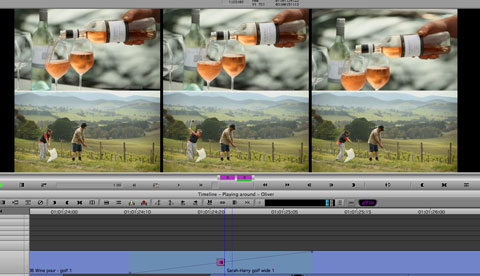
Avid was first out of the gate in the run-up to NAB with its release of the Media Composer 5.5 update for this flagship NLE product line. Avid Media Composer 5.5 (and the associated Symphony and NewsCutter versions) marks a continued openness starting with the release of Media Composer 5.0 last year. That release demonstrated a major retooling, which drew mixed reviews from veteran Avid editors. The most recent version, 5.0.3.8, is very stable and has been tweaked to adjust the behavior of some of the newest features, like Smart Tool, in an effort to respond to customer input.
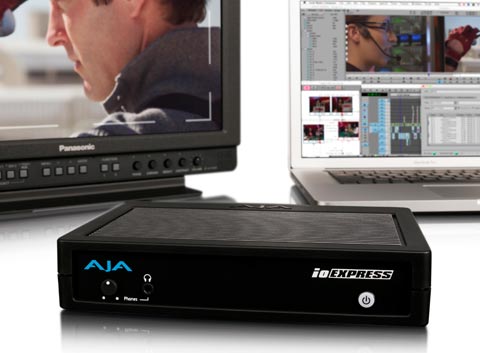
New hardware options
The big standout of the Media Composer 5.5 release is the addition of AJA Io Express as a capture and output solution. The other hardware choices still include the Matrox MXO2 Mini, as well as Avid’s own hardware – Avid Mojo SDI, Mojo DX and Nitris DX. The Matrox unit is ideal for simple monitoring, but the AJA Io Express extends the functionality to include SD and HD capture over SDI under Media Composer control.
The Matrox MXO2 Mini hasn’t been left out of this upgrade. It gains additional format support for SD and HD 23.98fps projects, as well as the ability to switch between 1080P and 1080PsF outputs. Both Matrox and AJA provide cost-effective, third-party alternatives to the Avid systems; however, speaking from personal experience, if your budget can justify it, the Avid Nitris DX still offers the best performance overall. The latency common with hardware/software combos used in competing NLEs is almost nonexistent with Mojo DX and Nitris DX.
The Avid Nitris DX chassis was designed with expansion in mind. New this year is a hardware module for the Nitris DX chassis that specifically accelerates AVC-Intra workflows. This enables built-in AVC-Intra encoding and decoding for real-time, multi-stream AVC-Intra timelines. This add-on is targeted towards broadcasters and anyone who has made a heavy investment in P2 equipment.
Thanks to the acquisition of Euphonix, Avid Media Composer has adopted the EUCON protocol, permitting the use of the rebranded Avid Artist control surfaces with Media Composer 5.5. Windows and Mac versions are supported and include the Artist Control, Artist Mix and Artist Transport controllers. Media Composer support for the Artist Color panel, which is supported by Foundry Storm, Autodesk Smoke and Apple Color, didn’t quite make it into this release. If you love tactile surfaces, these units are for you. The only issue seems to be an intermittent tendency to loose EUCON communication over Ethernet, which is often fixed by unplugging and replugging the Ethernet cable to the controller.
Avid Media Composer and Pro Tools play more nicely together these days. You can install them both on the same system (but not open at the same time). Now in this 5.5 release, Media Composer can utilize Pro Tools audio interfaces for audio i/o. This adds multi-channel audio support to Media Composer on workstations where both applications are co-installed.
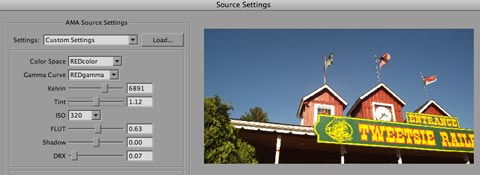
Avid Media Access
Media Composer 5.5 changes the installation routine for AMA – Avid’s native camera plug-in architecture. The default installation only includes Avid’s QuickTime plug-in (ProRes, H.264, uncompressed, etc.). The various camera plug-ins must be separately installed, but are available from Avid’s or the manufacturers’ download sites. By keeping them separate, it allows users to stay on top of the most recent versions of the plug-in offered by the manufacturer.
Media Composer 5.5 currently supports RED, XDCAM, P2, GF (Ikegami) and XF (Canon) in addition to most QuickTime variants. New is support for Sony’s upcoming HDCAM-SR Lite and SR SQ codecs, although the plug-in hasn’t been released yet. This new codec will be used by Sony in tapeless versions of its HDCAM-SR camcorders. AMA support enables direct access to the file-based media along with the associated metadata.
Another AMA enhancement will let users select between video level options in an updated Source Settings control, first introduced for RED camera raw files. Now it can also be used to scale levels for RGB or Rec. 601/709 values. Since this control displays a “custom/default/load” control, I presume that in the future we’ll see the ability to install display LUTs (look-up tables) for cameras like the ARRI ALEXA.
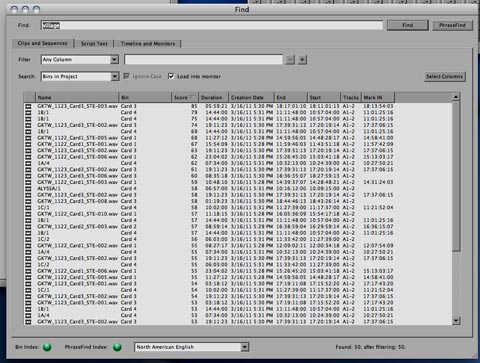
PhraseFind
Avid Media Composer 5.5 has introduced one major, new “marquee” feature – PhraseFind. This is a dialogue search tool based on phonetic analysis of the audio tracks. It’s similar to AV3 Software’s Get application, since both are powered by the Nexedia dialogue search engine. The big difference is that Get works outside of an NLE, whereas PhraseFind is directly integrated into Media Composer’s interface as part of the newly enhanced Find tool.
To use PhraseFind, simply open Find and type in the word or phrase you want to locate. If your tracks haven’t been analyzed yet, it only takes a few moments for PhraseFind to index the tracks. PhraseFind works on phonetic matches. Scripts/transcripts aren’t used and correct spelling isn’t important. The results window will display a sortable column with an accuracy score. Results with a high percentage (80 or 90%) will typically be good matches, while low scores (50 or 60%) are often wrong; however, percentages aren’t always a reliable indication of a good or bad match. Since the match is phonetic, you’ll discover that there are many words and phrases that sound the same as your query.
The accuracy of the results tends to vary with dialects and a person’s speaking cadence. For instance, I’m using the North American English language installation and one of my projects had only Australian speakers. I had few high-score matches and many of the mid-score matches were wrong. In another project with American speakers – who also spoke more slowly in these interview clips – the matched results frequently had high scores. Even the clips with 50% accuracy included many correct matches.
PhraseFind is a powerful tool that anyone cutting long-form features, documentaries and corporate videos is bound to love. Need to change the inflection of a word to properly end a sentence? Search for that word by the same speaker and do an audio-only edit to insert the appropriate match. As an editor who rarely works with scripted content, it seems more useful to my workflow than ScriptSync; but, like ScriptSync, it is a paid option that is not included with the standard Media Composer installer. In an effort to attract customers to this feature, Avid is offering a number of upgrade deals that include a Media Composer 5.5 upgrade if you purchase PhraseFind. Multiple language packs are also available.

What else is new?
Avid’s designers caught a lot of heat from veteran users over Smart Tool, a contextual tool introduced in version 5 that enabled direct timeline manipulation. The main complaint has been that you can’t completely turn it off. Thanks to the various adjustments since its initial release, Smart Tool largely stays out of the way if you don’t want to use it. I personally map the Smart Tool command to a keyboard key and enable it as needed. This is no different than clicking between a Selection and Rolling Edit key in Final Cut or Premiere Pro. A new addition is Transition Manipulation, giving editors the ability to alter transition durations and locations in a modeless manner, simply by dragging on the transition icon in the timeline.
Media Composer 5 introduced RTAS audio filters, which can be applied to a complete track, as in Pro Tools. With the 5.5 release, Avid added 20 of the Pro Tools AIR audio plug-ins. These can be applied on a per-clip or per-track basis. Media Composer’s audio plug-in implementation is quite good, but misses the factory presets available in Pro Tools. A few of the third-party RTAS filters exhibit some unusual behavior in Media Composer. I own a set of the Focusrite Scarlett plug-ins. These generally work well with Media Composer, however, a couple of the virtual switches don’t respond correctly. Yet, the same plug-ins work fine in Avid Pro Tools 9 or Apple Soundtrack Pro. This tends to be an issue where plug-in developers have tweaked the code for Pro Tools instead of strictly adhering to the RTAS API used by Media Composer.
A few of the other changes will generally go unnoticed. The design team has tweaked some of the interface items, so fonts display more correctly under the corresponding OS. The interface colors have received one minor tweak, where the second darkest background color will now reverse some of the text to white. It’s an area that still needs work, if you prefer a darker user interface. Otherwise, there are no major UI changes between 5.0 and 5.5.
Don’t forget that Avid Media Composer is actually a suite of software, not unlike Adobe’s Production Premium or Apple’s Final Cut Studio. The boxed version includes the Avid Production Suite bundle (a separate purchase for the download version). This has been updated to reflect newer versions of the third-party software. In total, it’s a package worth several thousand dollars at retail that covers Avid customers for encoding (Sorenson Squeeze), advanced effects (Boris Continuum Complete and Avid FX), music (SmartSound SonicFire) and DVD/Blu-ray authoring (Avid DVD). All are cross-platform products, except Avid DVD, which is Windows-only.
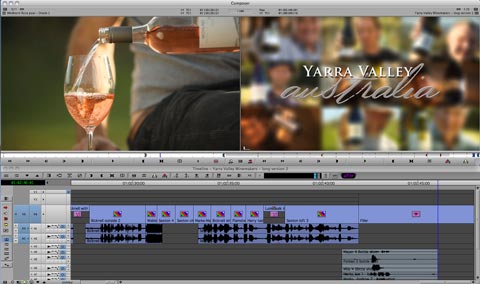
Should you upgrade?
If you want to stay current, this is a very solid update, however Media Composer 4 and 5.0.3.8 are also pretty solid. There’s enough in this version to make the minimal upgrade cost worth it, but it depends on whether there are new features that really benefit your workflow.
This is the last 32-bit version. Presumably that means we’ll see a 64-bit Media Composer 6 at some point down the road, but I don’t really suggest waiting it out. If you own Avid Adrenaline hardware, this will be the last version to support it. As much as people opine about 64-bit advantages, I find that the current Media Composer’s 32-bit performance in handling media and real-time effects is still superior to most of the 64-bit NLEs on the market.
PhraseFind adds a powerful new tool to your kit, which covers the upgrade cost from Media Composer 5. That alone makes it attractive. Plus, it’s infectious! The more you use it, the more it becomes ingrained into your editing style. You’ll wonder why it hasn’t been there all along. It’s that kind of innovation, which Avid is known for. I’m glad to see it coming back to their ongoing product design effort.
Written for Videography magazine (NewBay Media LLC).
©2011 Oliver Peters